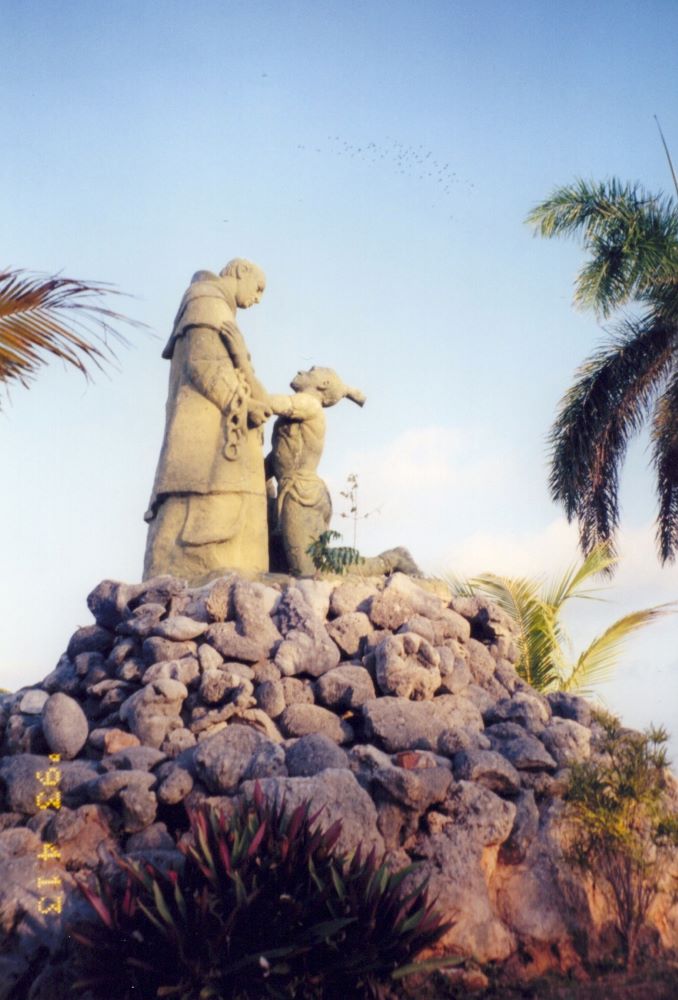Whether applied to its native people or the descendants of enslaved Africans, a long-standing fiction survives in Cuba that non-whites were deeply grateful to individual whites, as this monument argues, or whites in general, for having “saved them” from either their own savagery and “incultura” [inferior culture], or from the injustices perpetrated on them by other whites. This position is not only ahistorical but racist because it assumes the superiority and inevitability of European domination over non-Europeans as a “natural” course of history, rather than a deliberate result born of extreme violence and a political economy justifying violence. Erected in 1955 after Batista’s government designated the nearby colonial town of Trinidad a national heritage site, this monument to the Spanish priest Bartolomé de Las Casas has never been altered or taken down, despite the many ways that it reflects the paternalistic myth of Cuban indigenous gratitude and childish abnegation. Although Las Casas contested indigenous enslavement for devastating the population, he never indicted his old friend Columbus for enslaving and selling natives by the thousands himself, nor did he ever question the imperial right of Conquest, allegedly in the name of Jesus. Worst of all, Las Casas proposed that Africans be captured, enslaved, and traded instead of “Indians,” a policy Europeans implemented in due course as their genocide, by the 1550s, in the Caribbean proved increasingly complete. TRINIDAD, JUNE 2000.
As this website nears its second year of exploration and reflection on Cuba’s lessons for the world, we also witness the continuing flight of more than half a million Cubans from the island for the United States. Since 2022, Cuba’s oldest-running Communist leaders—such as Raúl Castro, Ramiro Valdés, and others—have presided over a visibly consolidated crony-capitalist state defended by a tiny political elite and a massive security apparatus. Self-serving policies and recently decreed legal mechanisms for repressing dissent also reflect great historical irony: the very dictatorship of Fulgencio Batista that these leaders once overthrew has flourished anew. Given Cuba’s permanent state of crisis and the oddly stagnant policies of the last two US administrations, this Fotodiario edition of our website looks back at the Special Period, the post-Soviet era of the 1990s and early 2000s, that plunged all islanders into a watershed crisis of surreal proportions. Gems of the Archive and Ex-Libris celebrate UF’s acquisition of the Eduardo “Guayo” Hernández Collection, an incredible testament to the democratizing role of Cuba’s once-independent journalism. We hope this edition will invoke curiosity, knowledge, analysis, and the courage to debate and consider what kind of change might benefit the most Cubans among all of our Cuban Studies’ viewers.
